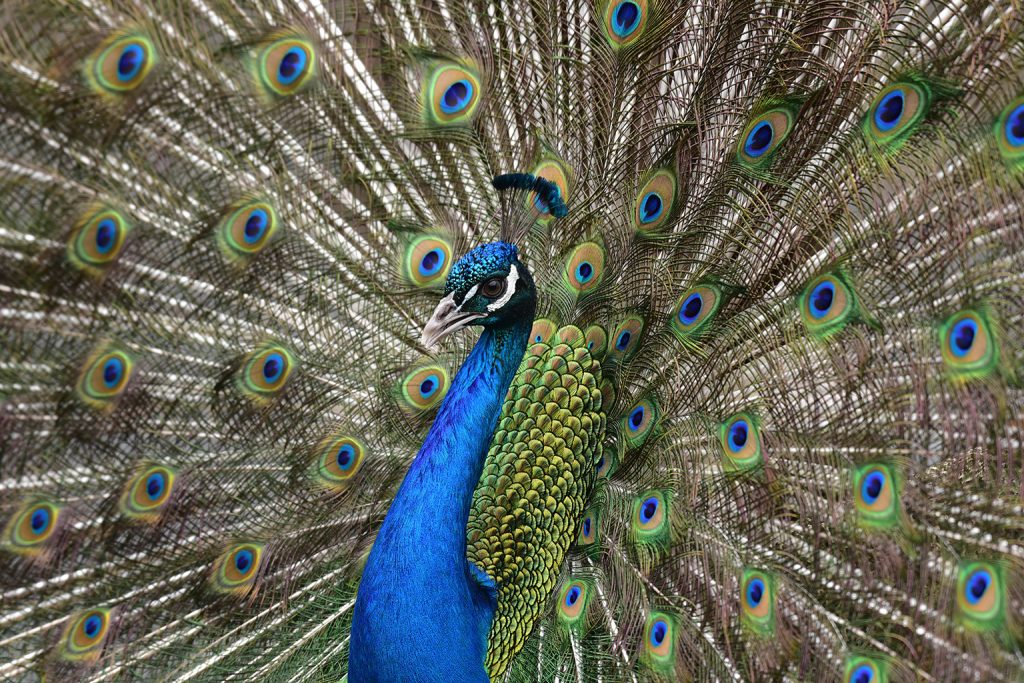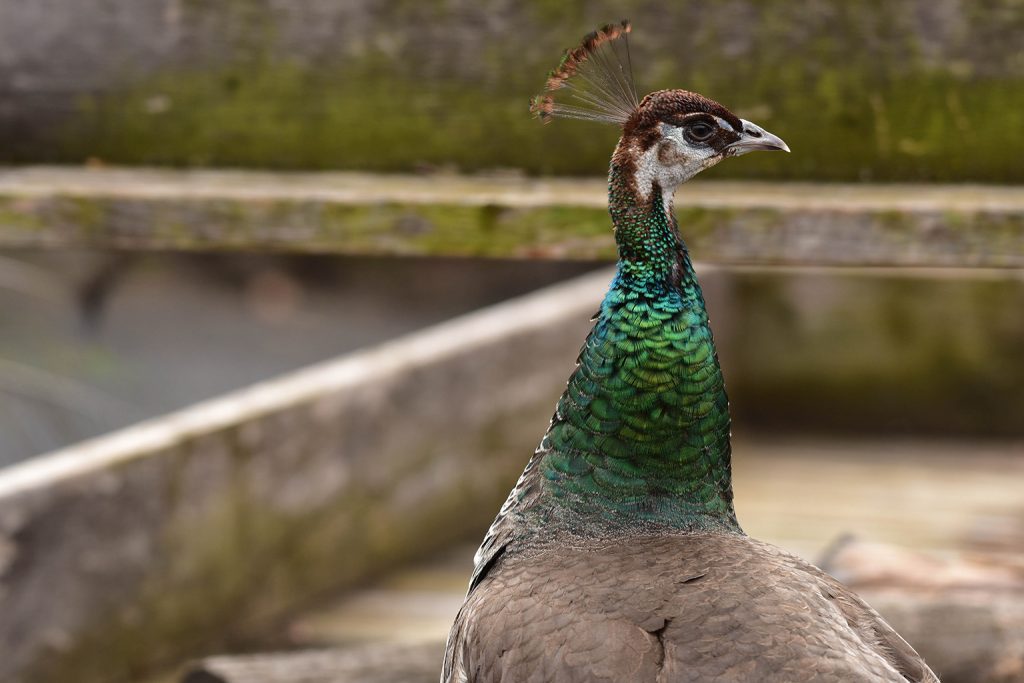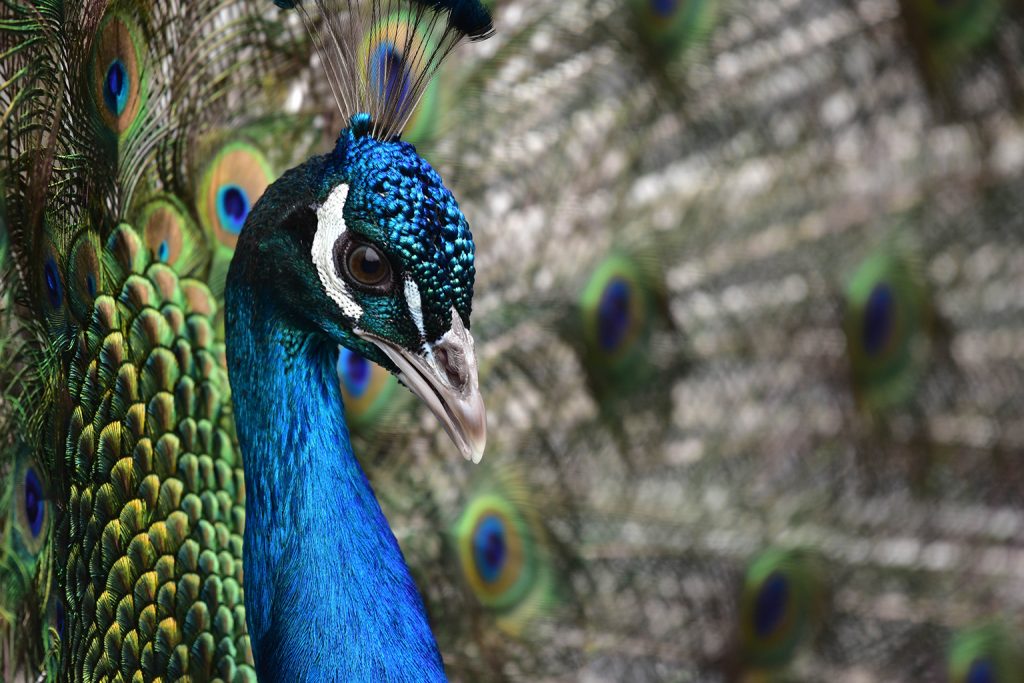Overview
“Where I live”
Indian peafowl are native to India and neighboring countries but are now found all over the world in feral colonies or as a domesticated species. In their native range, peafowl typically live near rivers or streams in wooded areas. They are also free-ranging in agricultural areas, villages, and even urban areas.
“How I live there”
Peafowl are active during the day and roost together in trees at night, where they are safest from predators. They are busiest early and late in the day, foraging on the ground for seeds, fruit, and insects, and tend to rest during the hottest part of the day. If threatened or harassed, they are surprisingly quick and agile runners, despite their long trains.
“Making my mark”
Can you say gorgeous? That seems to be what every peacock, fanning his spectacular train for all to admire, encourages you to say (or, more accurately, wants peahens to grasp). A peacock’s beauty is aimed at his drab female counterparts. Peacocks flaunt their colorful trains in hopes of impressing peahens and winning them over as mates. Research has shown that a peacock’s hopes are not in vain. Peahens really do prefer peacocks with the largest and most colorful trains. In this species of pheasant, the good-looking guy really does get the girl.
Raising Young
During breeding season, peahens may mate with multiple peacocks before laying clutches of 4-6 eggs, one at a time every other day, in shallow nests on the ground or in a tree. Peahens incubate their eggs for about one month. After hatching, peafowl chicks are reared by their mothers for 7-9 weeks and learn to forage by imitation. At about two months of age, young peafowl look like smaller versions of their mothers. At about two years of age, males begin to develop their distinctive coloration and long trains.
“What Eats Me”
In their native range, peafowl might get eaten by jackals or large cats such as tigers, leopards, and civets.
Conservation
Indian peafowl are listed as a species of least concern by the IUCN, the world’s leading conservation organization. They are a common domesticated species and are protected in many parts of their range, especially in India where the peacock is recognized as the national bird and considered sacred by Hindus.
Taxonomy
- Kingdom: Animalia
- Phylum: Chordata
- Subphylum: Vertebrata
- Class: Aves
- Genera: Pavo
- Species: cristatus



